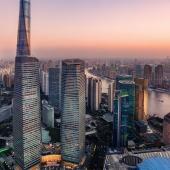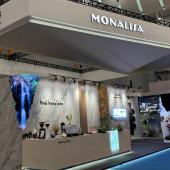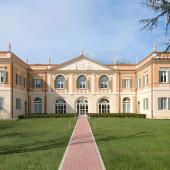Ceramic tile companies see improved economic and financial performance
The first edition of the study entitled "Financial statement analysis of world ceramic tile manufacturers" produced by the Acimac Research Department is now available.
Published as part of the "Financial Statement Analysis" series, the volume contains economic and financial data for the three-year period 2011-2013 of 288 companies operating in 41 countries, including 89 in Italy, 70 in Spain, 33 in other EU countries, 15 in non-EU European countries (with a prevalence of 9 Russian companies), 70 in Asia and 11 in the rest of the world (Egypt, Mexico, Tunisia, Argentina and Venezuela). Besides analysing the performances of individual companies, the study also examines the average results of the regional groupings Italy, Spain, other EU countries, non-EU Europe and the rest of the world.
The Italian tile industry is performing strongly, with large export volumes and a steady increase in selling prices as a result of a shift towards high added-value products. One of the key findings of the 2013 analysis and of the three-year averages is the Italian ceramic industry's growth in investments in capital goods and production equipment. This is reflected in the increase in the ratio of assets per employee (about 360,000 euros, amongst the highest of all tile producer countries) and in the industry's leading position in terms of production efficiency. Its added value margin (the ratio between added value and turnover) rose to 30.1% in 2013 and is the highest in the world, confirming an efficient use of production resources. The overall financial structure is also satisfactory, with an increase in equity ratio over the three year period.
By contrast, labour costs need to be kept under control as they contribute significantly to the squeezing of margins: ULCs (unit labour costs) are almost 3% higher than the figure for Spain and 1% higher than the European average, while EBITDA margin (7.5-8%) is still below the world average in spite of an improvement in 2013. However, the capacity of Italian companies to generate value is demonstrated by the fact that the average added value per employee (more than 72,000 euros) is the highest in the world.
The Spanish tile industry has also shown a strong overall performance. The growth in turnover (largely due to the adoption of more aggressive price policies with a view to increasing sales volumes) and rationalisation of production costs are leading to an increase in added value. The industry has seen growth in EBITDA (almost 10%), ROE (Return on Equity) and ROI. Despite a small increase in leverage (to 2.97), the Spanish tile industry displays a good level of financial stability and strong short-term solvency.
The outlook is less positive for the 37 companies operating in other EU countries, following a fall in profitability over the three-year period 2011-2013. Added value has dropped by almost a percentage point a year due to the higher average incidence of labour costs (which has also resulted in a fall in EBITDA) and production costs. However, the financial structure of these companies is improving in spite of a condition of undercapitalisation.
The group of non-EU European companies is also experiencing a slowdown in economic and financial performance, with ROE, ROI and ROS all worsening with respect to 2012. These results generally reflect an inefficient management of structural and production factors. On the upside, EBITDA remained slightly higher than the European average over the two-year period 2012-2013, largely thanks to the low incidence of labour costs and the one third fall in average cost of employees.
Thanks to their exceptional advantage in terms of low labour costs, Asian producers enjoy a good level of production efficiency in spite of their position in low-price and low-quality product segments. With one of the lowest ULCs in the world (10.4%), the added value ratio stands at 27% and EBITDA 13.2%. Net profits are also excellent, amounting to 5% of turnover.
The cluster analysis conducted in the Acimac study reveals the characteristics of the best performers, a group of 26 companies (10 in the EU, including 6 in Italy, 5 in non-EU Europe, 10 in Asia and 1 in Africa) with ROI higher than 15%. These companies follow two contrasting business models. The first is based on production processes that make intensive use of low-cost labour (prevalently in Asia and non-EU Europe) with medium to low-end product ranges sold mainly on the domestic market and operating in cost leadership conditions. The second is the model followed by Italian and some European companies, which focuses on differentiation, a limited workforce, large investments and high levels of productivity, resulting in a comparable ULC to that of Asian competitors.
| View technical page and table of contents of the study |
Did you find this article useful?
Join the CWW community to receive the most important news from the global ceramic industry every two weeks





















